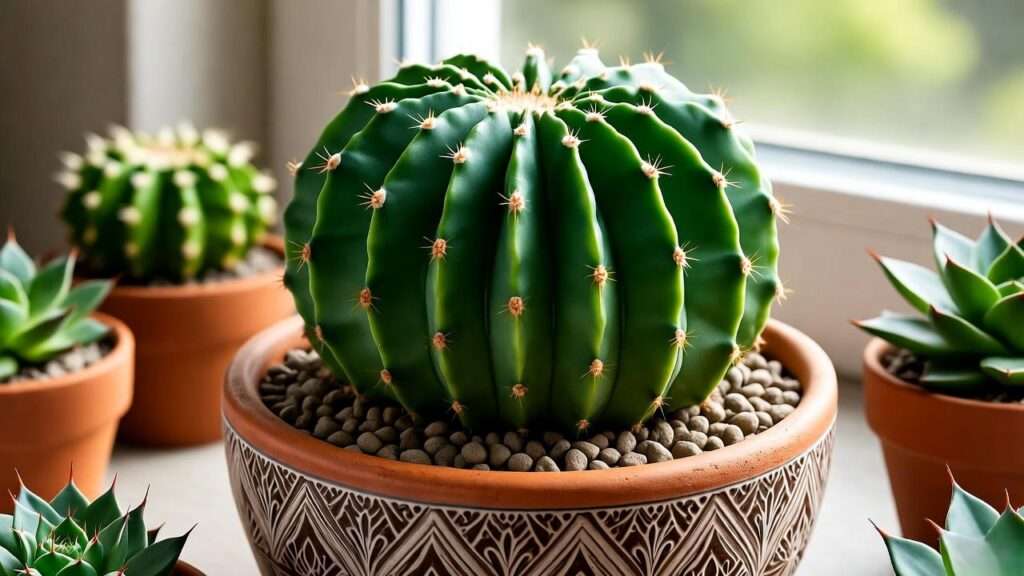Picture this: a quirky, brain-like cactus stealing the show on your windowsill, sparking conversations and turning heads with its unique, wavy shape! The brain cactus plant (Cristate Mammillaria elongata), with its mesmerizing crested growth, is a must-have for plant lovers seeking low-maintenance beauty. Whether you’re a beginner or a seasoned green thumb, this guide unlocks the secrets to growing a thriving brain cactus that stays healthy and stunning year-round. As a plant care enthusiast with over a decade of experience cultivating succulents, I’ve poured my expertise into this comprehensive guide to help you master brain cactus care. From light and water to propagation and styling, you’ll find everything you need to keep your cactus flourishing. Let’s dive into the world of this desert gem! 🌞
What Is a Brain Cactus Plant? 🧠🌿
Origins and Characteristics
The brain cactus, scientifically known as Mammillaria elongata ‘Cristata,’ hails from the rocky deserts of Central Mexico. Its distinctive, brain-like appearance comes from a rare mutation called cristation, where the cactus grows in a wavy, fan-like pattern instead of the typical cylindrical shape. This compact succulent typically reaches 6–8 inches in height and width, with a vibrant green body adorned with small, golden spines. Its unique texture and form make it a standout addition to any plant collection.
Why Choose a Brain Cactus?
Why is the brain cactus a favorite among plant enthusiasts? For starters, it’s incredibly low-maintenance, perfect for busy folks or those new to plant care. Its small size fits beautifully on desks, shelves, or tiny apartments, adding a touch of desert charm to any space. With proper care, this cactus can live for decades, becoming a long-term companion in your home. Plus, its quirky shape is a natural conversation starter, making it a delightful decor piece.
Expert Insight: I’ll never forget the first time I brought home a brain cactus—it was love at first sight! Its unusual shape instantly transformed my office desk into a mini desert oasis. After years of experimenting with cacti, I can confidently say the brain cactus is one of the easiest to grow, even for beginners.
Understanding the Brain Cactus’s Needs 🌞💧
To keep your brain cactus thriving, you need to mimic its natural desert habitat. Let’s break down its core requirements: light, soil, water, temperature, and humidity.
Light Requirements
Brain cacti crave bright, indirect sunlight for 6–8 hours daily. A south-facing windowsill is ideal for indoor plants, while outdoor growers should choose a spot with filtered light to avoid scorching. Too little light causes etiolation (stretching), while too much direct sun can lead to sunburn (brown, crispy spots). Rotate your cactus every few weeks to ensure even light exposure.
Pro Tip: If you notice your cactus leaning toward the light, it’s a sign it’s not getting enough—move it to a brighter spot or supplement with a grow light.
Soil and Potting Needs
A well-draining soil mix is non-negotiable for brain cacti. Opt for a commercial cactus or succulent mix, or make your own by combining 50% potting soil, 30% perlite, and 20% coarse sand. Choose a terracotta pot with drainage holes to prevent water from pooling, which can cause root rot. Repot every 2–3 years or when the cactus outgrows its pot, typically in spring.
Watering Guidelines
Watering a brain cactus is simple but requires restraint. During the growing season (spring and summer), water every 2–3 weeks, allowing the soil to dry out completely between sessions. Use the soak-and-dry method: water thoroughly until it drains out, then wait until the soil is bone-dry before watering again. In winter, reduce to once a month or less, as the cactus enters dormancy. Overwatering is the number one killer of cacti, so err on the side of caution.
Quick Tip: Stick your finger 1 inch into the soil—if it feels dry, it’s time to water. Alternatively, use a moisture meter for precision.
Temperature and Humidity
Brain cacti thrive in temperatures between 65–85°F (18–29°C). They can tolerate brief dips to 50°F (10°C) but should be protected from frost. Low humidity is ideal, as high moisture can lead to fungal issues. Keep your cactus away from drafty windows or heating vents to avoid sudden temperature swings.
Tip Box:
- Light: 6–8 hours of bright, indirect sunlight.
- Soil: Well-draining cactus mix in a terracotta pot.
- Water: Every 2–3 weeks in spring/summer, less in winter.
- Temperature: 65–85°F, avoid below 50°F.
- Humidity: Low, desert-like conditions.
Step-by-Step Care Guide for a Thriving Brain Cactus 🌟
Now that you understand the basics, let’s walk through the practical steps to keep your brain cactus healthy and vibrant.
Watering Best Practices
Follow these steps for perfect watering:
- Check soil dryness: Ensure the top 1–2 inches of soil are dry.
- Water thoroughly: Pour water evenly until it drains out the bottom.
- Empty the saucer: Never let the pot sit in standing water.
- Wait: Allow the soil to dry completely before the next watering.
Common Mistake: Overwatering can lead to a mushy base or root rot. If you notice soft, discolored spots, stop watering immediately, remove affected areas, and repot in fresh, dry soil.
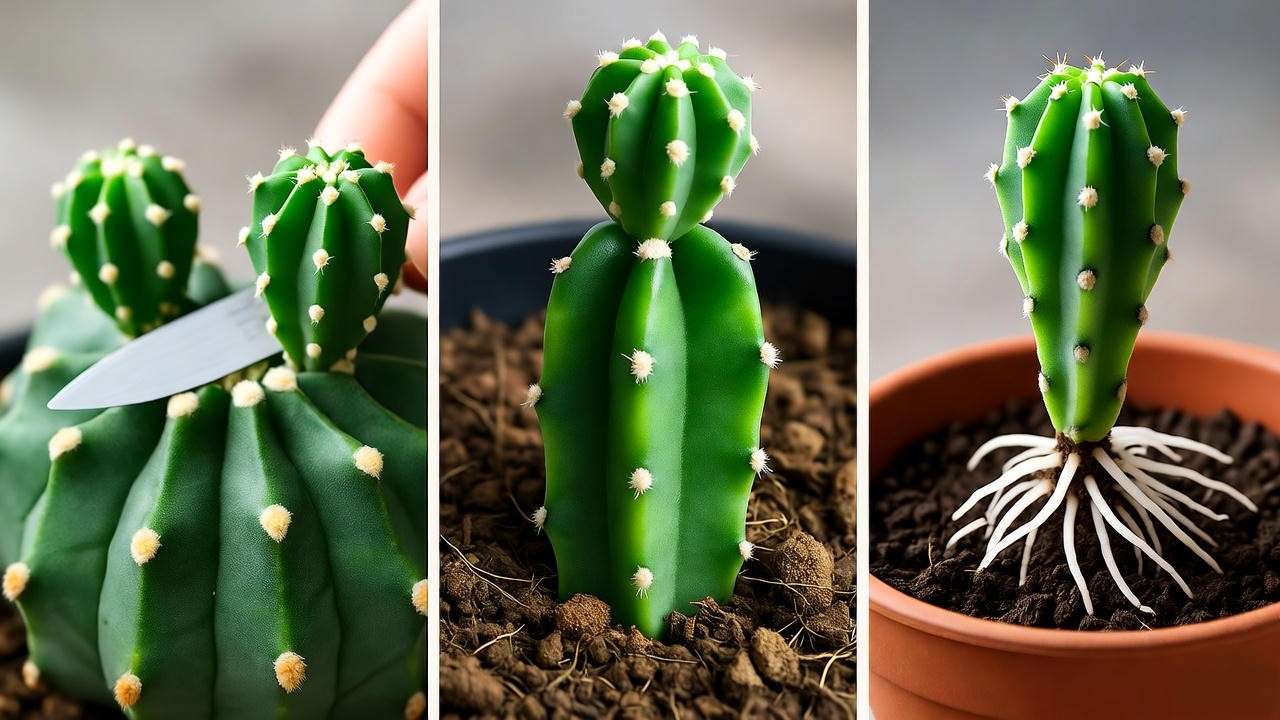
Fertilizing for Optimal Growth
Feed your brain cactus sparingly to boost growth. Use a diluted cactus fertilizer (e.g., 10-10-10) once a month during spring and summer. Dilute to half strength to avoid burns, and skip fertilizing in fall and winter when the cactus is dormant.
Pro Tip: Liquid fertilizers are easier to control than granular ones—mix with water for even distribution.
Pruning and Maintenance
Brain cacti require minimal pruning. Occasionally remove dead spines or offsets (pups) to keep the plant tidy. Use clean, sharp tweezers to avoid damaging the cactus. Dust can block photosynthesis, so gently brush the surface with a soft paintbrush or blow it off with a straw.
Propagating Your Brain Cactus
Propagating a brain cactus is a rewarding way to expand your collection or share with friends. Here’s how to do it:
- Identify offsets: Look for small pups growing at the base.
- Cut carefully: Use a sterilized knife to remove the pup, ensuring some roots are attached.
- Let it callus: Place the cutting in a dry, shaded spot for 3–5 days to form a callus.
- Plant: Pot in a small container with cactus soil mix.
- Water lightly: Mist the soil every few days until roots form (2–4 weeks).
Expert Insight: I once propagated a brain cactus pup that grew into a stunning centerpiece for my coffee table. Patience is key—don’t rush the callusing process, as it prevents rot.
Common Problems and How to Solve Them 🚨
Even with the best care, issues can arise. Here’s how to tackle the most common brain cactus problems.
Pests and Diseases
Brain cacti are prone to pests like spider mites, mealybugs, and scale insects.
- Spider Mites: Look for fine webbing or speckled leaves. Treat with a neem oil spray (1 tsp neem oil, 1 quart water).
- Mealybugs: White, cottony spots. Dab with a cotton swab soaked in 70% rubbing alcohol.
- Scale: Hard, brown bumps. Scrape off gently and apply insecticidal soap.
Prevention: Inspect regularly, ensure good air circulation, and avoid overwatering.
Overwatering and Root Rot
Overwatering leads to soft, yellowing, or mushy spots. To fix:
- Remove the cactus from its pot.
- Trim away black, mushy roots with sterilized scissors.
- Repot in fresh, dry cactus soil.
- Wait 7–10 days before watering lightly.
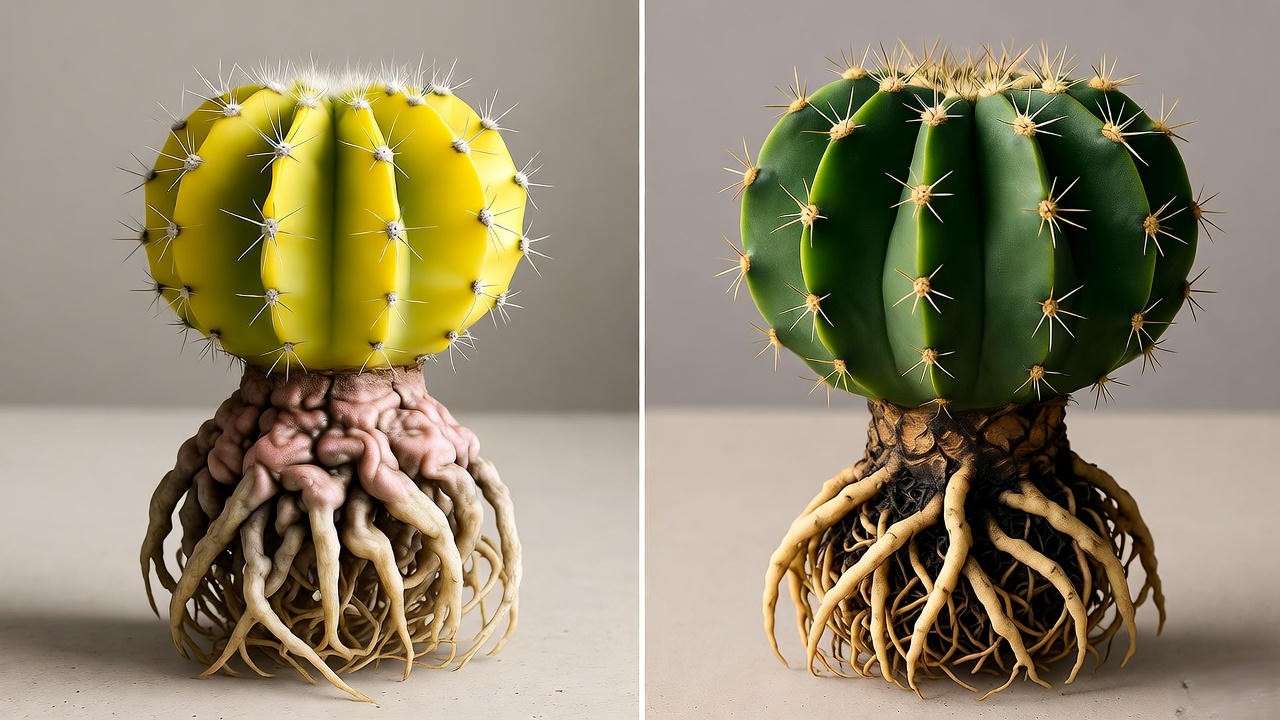
Sunburn or Etiolation
- Sunburn: Brown or white crispy patches from too much direct sun. Move to filtered light and avoid further exposure.
- Etiolation: Stretching or leaning due to insufficient light. Gradually increase light exposure over 1–2 weeks.
Troubleshooting Table:
| Issue | Cause | Solution |
|---|---|---|
| Yellowing | Overwatering | Reduce watering, check roots |
| Brown spots | Sunburn | Move to indirect light |
| Stretching | Low light | Increase light gradually |
| White spots | Mealybugs | Apply rubbing alcohol |
Styling and Displaying Your Brain Cactus 🏡
A brain cactus isn’t just a plant—it’s a statement piece! Its unique, wavy shape makes it a perfect addition to any home decor. Here’s how to showcase your cactus with style and flair.
Creative Potting Ideas
Elevate your brain cactus’s visual appeal with the right pot. Terracotta pots are a classic choice, as they complement the cactus’s desert vibe and promote drainage. For a modern twist, try geometric ceramic pots in neutral tones like white or matte black. You can also group your brain cactus with other succulents in a shallow dish to create a mini desert garden. Add decorative pebbles or colored sand for extra charm.
Pro Tip: Paint a plain terracotta pot with non-toxic acrylic paint for a personalized touch—just ensure the drainage hole remains clear.
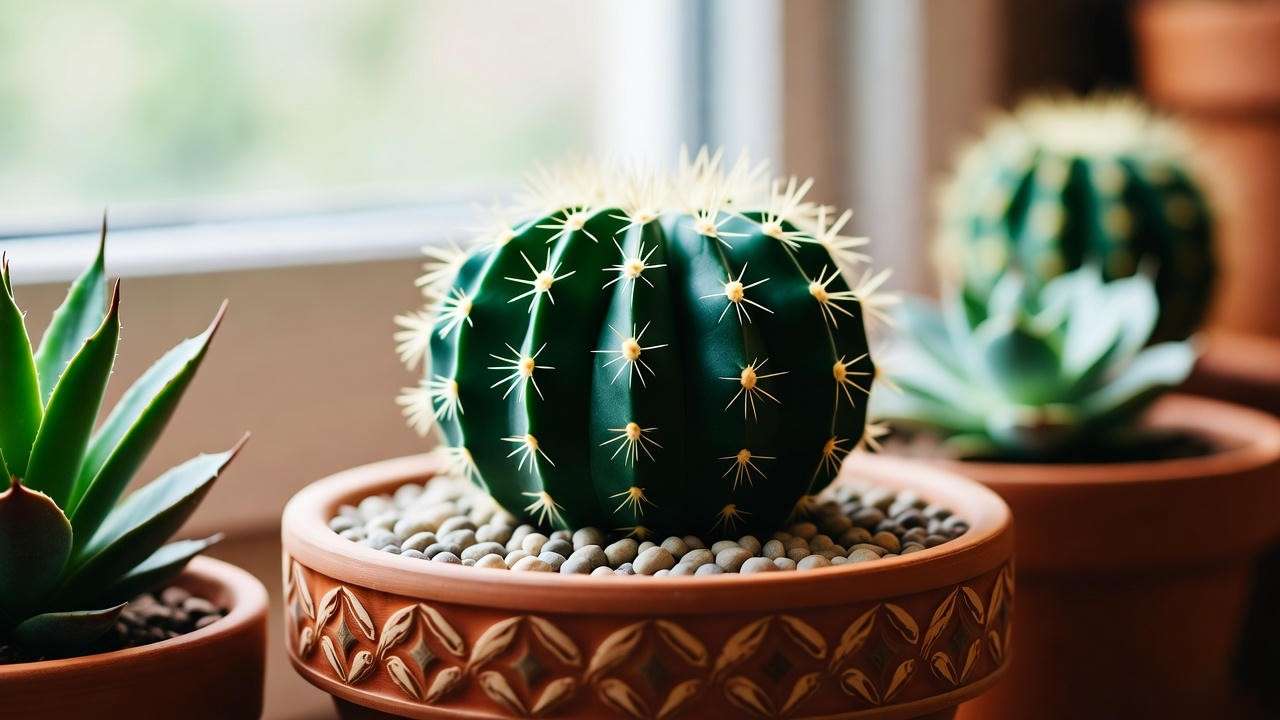
Placement Tips for Home Decor
Place your brain cactus where it can shine, both literally and figuratively. A sunny windowsill, desk, or bookshelf with bright, indirect light is ideal. Its compact size makes it perfect for small spaces, like a cozy apartment or office cubicle. According to feng shui principles, cacti symbolize protection and resilience—place yours near an entrance or workspace to channel positive energy.
Example: One of my readers shared a photo of their brain cactus on a minimalist wooden shelf, paired with a tiny ceramic figurine. The contrast between the cactus’s quirky shape and the sleek decor was stunning!
Seasonal Display Ideas
Get creative with seasonal arrangements to keep your brain cactus looking fresh. For the holidays, tuck tiny, lightweight ornaments among the spines for a festive touch (use plastic to avoid damage). In summer, incorporate your cactus into a rock garden with other succulents for an outdoor-inspired display. For a year-round option, try a glass terrarium with gravel and driftwood accents—just ensure proper airflow to prevent moisture buildup.
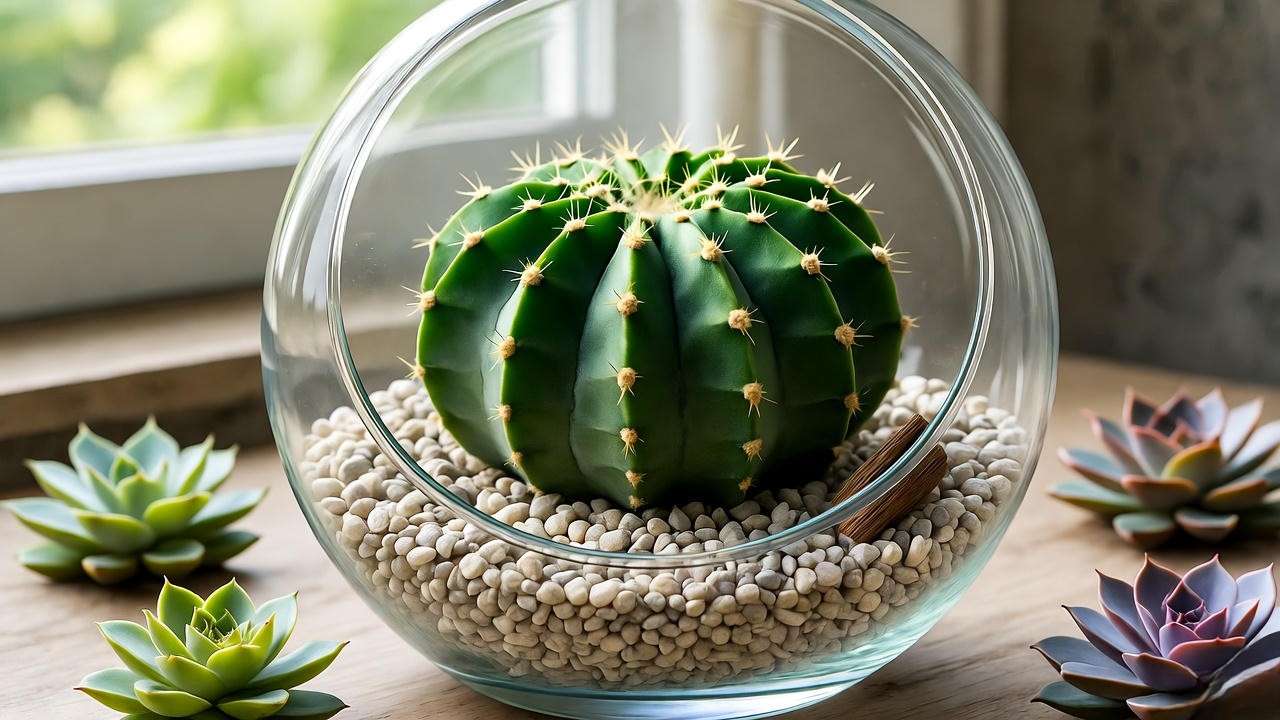
Quick Tip: Avoid sealed terrariums, as brain cacti need low humidity to thrive.
Advanced Tips for Brain Cactus Enthusiasts 🌵🔍
Ready to take your brain cactus care to the next level? These advanced tips will help you unlock your cactus’s full potential, from encouraging blooms to maintaining its unique shape.
Encouraging Blooms
While brain cacti are primarily grown for their shape, they can produce small, vibrant flowers (pink or yellow) in spring under the right conditions. To encourage blooming:
- Age: Most brain cacti bloom only after 3–5 years of maturity.
- Light: Ensure consistent, bright light year-round.
- Stress: Slight stress (e.g., cooler nights in early spring) can trigger flowering, but avoid extremes.
- Fertilizer: Use a phosphorus-rich fertilizer (e.g., 5-10-5) in late winter to prep for blooms.
Note: Don’t be discouraged if your cactus doesn’t bloom—it’s still a showstopper without flowers!
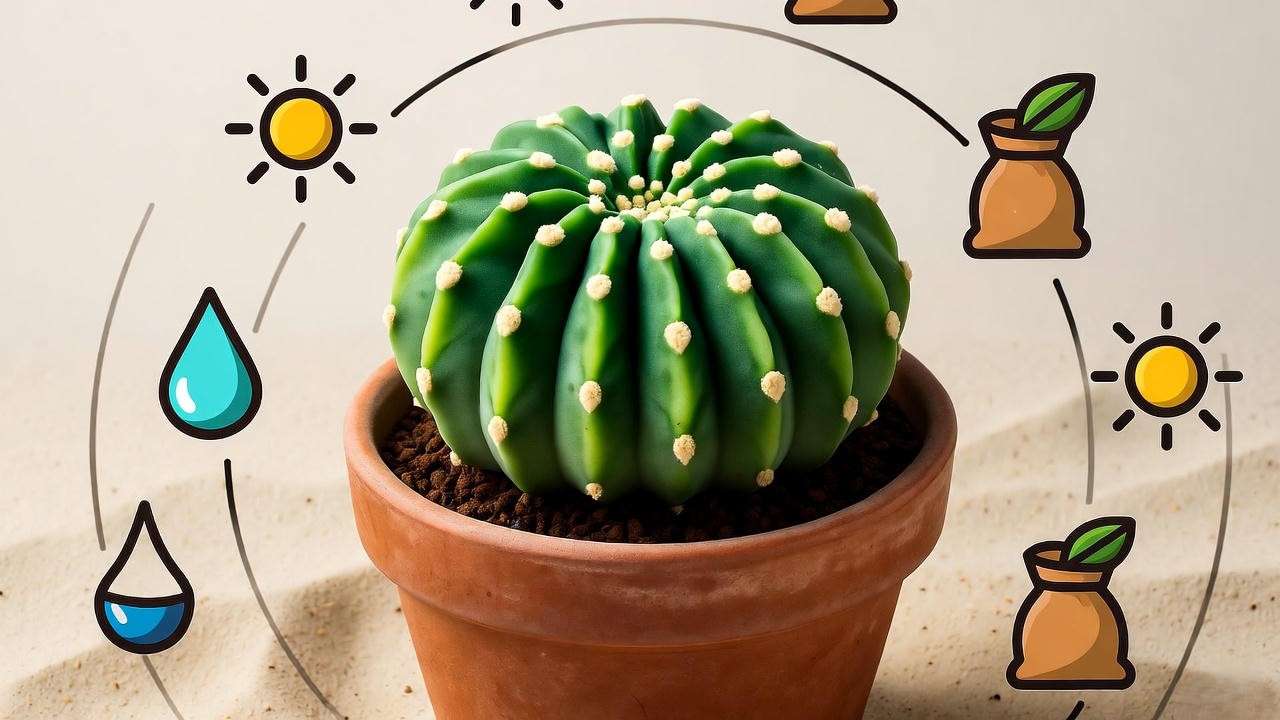
Managing Cristate Growth
The brain cactus’s signature crested shape is a natural mutation, but it requires care to maintain. Avoid physical damage to the crest, as it’s more delicate than typical cacti. If the cactus begins producing normal, cylindrical growth (reverting), gently trim these offsets to preserve the cristate form. Ensure optimal light and minimal stress to prevent reversion.
Expert Insight: I once cared for a brain cactus that started reverting after a year in low light. Moving it to a brighter spot and trimming the offsets restored its wavy beauty within months.
Winter Care Strategies
During winter, brain cacti enter dormancy, slowing growth and requiring less care. Follow these tips:
- Reduce watering: Water once every 4–6 weeks, only if the soil is completely dry.
- Protect from cold: Keep indoor cacti away from drafty windows or unheated rooms.
- Maintain light: Move to the brightest spot possible, as winter light is weaker.
For outdoor cacti in mild climates, consider a frost cloth for extra protection during chilly nights.
Pro Tip: A heat mat set to 65°F can help indoor cacti stay cozy in colder climates.
FAQs About Brain Cactus Care ❓
To address common questions and boost SEO, here are answers to the top queries about brain cactus care:
Q1: How often should I water my brain cactus?
Water every 2–3 weeks in spring and summer, ensuring the soil dries out completely. In winter, reduce to once every 4–6 weeks. Overwatering is a common mistake, so always check soil moisture first.
Q2: Can a brain cactus survive in low light?
While it can tolerate low light temporarily, it needs 6–8 hours of bright, indirect sunlight for optimal health. Low light causes stretching, weakening the plant. Supplement with a grow light if needed.
Q3: Why is my brain cactus turning yellow?
Yellowing usually indicates overwatering or root rot. Check the roots, trim any mushy parts, and repot in dry soil. Adjust your watering schedule to prevent recurrence.
Q4: How do I propagate a brain cactus successfully?
Propagate by removing offsets (pups) with a sterilized knife, letting them callus for 3–5 days, and planting in cactus soil. Mist lightly until roots form, typically in 2–4 weeks.
Q5: Is the brain cactus toxic to pets?
Brain cacti are non-toxic to cats and dogs, but their spines can cause irritation or injury. Keep out of reach of curious pets to avoid mishaps.
Conclusion: Your Path to a Stunning Brain Cactus 🌟
Growing a thriving brain cactus plant is easier than you think! By providing bright, indirect light, well-draining soil, minimal water, and a touch of love, you’ll have a quirky, healthy cactus that wows everyone who sees it. Whether you’re troubleshooting pests, propagating pups, or styling your cactus for maximum impact, this guide has you covered with expert tips and practical advice. Start your brain cactus journey today, and don’t forget to share your progress in the comments or on social media with #BrainCactusLove! For more plant care inspiration, check out our guides on succulent care or low-maintenance houseplants. Happy growing! 🌵

